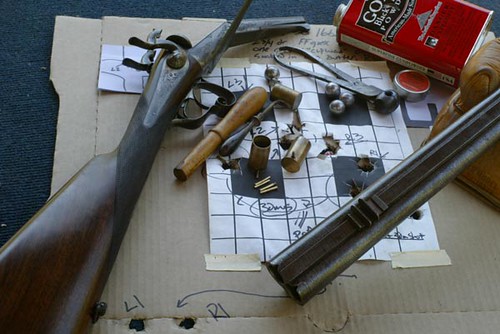| tinker |
| (.416 member) |
| 01/04/05 03:44 PM |

|
|
|
What was the barrel length and overall weight of this rifle?
Did you guys photograph the blown barrel? Did you recover all the blown material and photograph it too?
When was the gun proofed?
I've handled a lot of blown up equipment, not nearly as many guns as engines and machines, but I've seen quite a few blown barrels.
I'd have looked closely at the broken bits and examined the ripped surfaces.
I would have been looking for consistent color and texture of material across the torn edge of the metal. I've seen hundreds of broken parts that had somewhat peened looking or -darker than the rest of the metal- areas of the ripped or broken edge of blown equipment. That could indicate some kind of previous stress or crack having been present, peened surfaces being caused by the heaving of the cracked metal during the cyclic stress of use, dark metal from corrosion having been present in a crack in a dormant piece of macinery, then blown upon reawakening. Sometimes you'll see a texture in the ripped surface that might look almost like ripped meat, then somewhere in the middle of things chrystalization or granulation, indicating some kind of heat treatment issue or alloy problem having been the cause.
Clean metal with consistent surface texture all through the broken surfaces, with no irregularities or discolorations, peening or shiny or worn looking areas would look right off the bat to be from a big pressure spike.
If it was a problem with the steel, there would likely be some tell tale sign in the meat of the broken area.
Did you see anything odd when you inspected the barrels afterwards?
Do you have access to the pieces so as to photograph them and show them off to the group here?
What was the wall thickness of that barrel where it blew?
The same as it was at the muzzle?
--Tinker